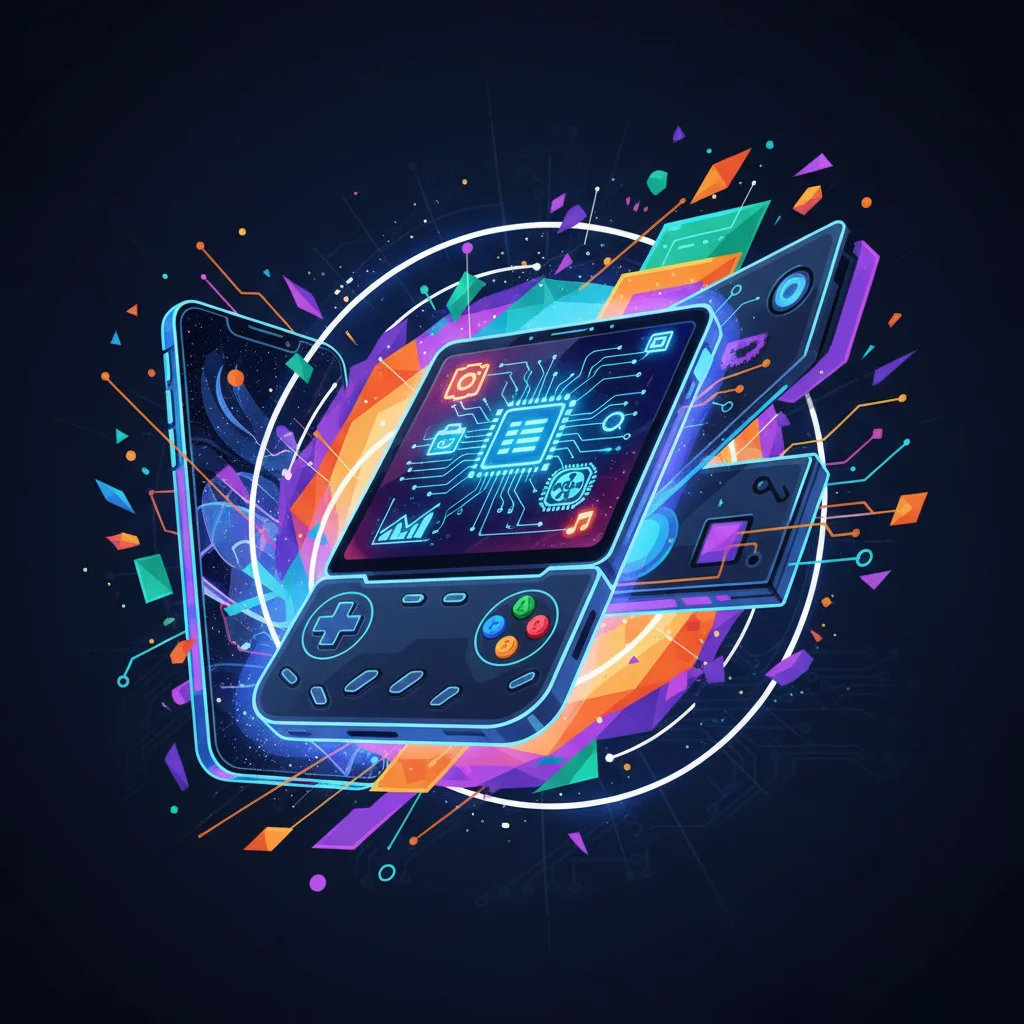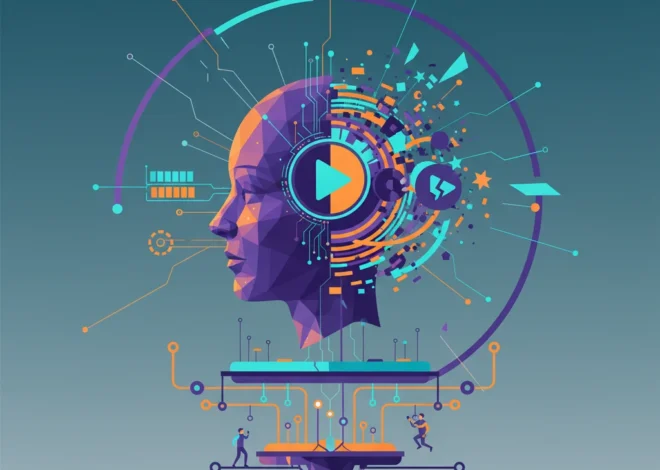
The Console Killer in Your Pocket? Why the Handheld PC Revolution is About More Than Just Gaming
The world of tech is defined by convergence. The phone in your pocket is a camera, a GPS, a computer, and a communication device all in one. We’ve watched as distinct product categories have been swallowed whole by more versatile, powerful successors. Now, a new convergence is shaking the foundations of a multi-billion dollar industry, and it’s happening in the palms of our hands. The device at the heart of this shift isn’t from Sony, Nintendo, or even officially from Microsoft, but it points to a future where the lines between PC, console, and mobile are irrevocably blurred. We’re talking about the rise of the handheld PC, exemplified by devices like the ASUS ROG Ally, a powerful Windows-based machine that brings the entire Xbox ecosystem, and much more, into a portable form factor.
The initial buzz is simple: it’s like an Xbox you can take anywhere. The ROG Ally works with Game Pass out of the box, instantly granting players access to a library of hundreds of games. But to dismiss this as just another gaming gadget is to miss the forest for the trees. This device is a Trojan horse, smuggling in the biggest trends in modern technology—from cloud computing and SaaS business models to on-device artificial intelligence and new cybersecurity challenges. For developers, entrepreneurs, and tech professionals, the implications extend far beyond the next blockbuster game release. This is a glimpse into the future of software distribution, hardware innovation, and user experience.
The Operating System is the Platform: A Software Deep Dive
Unlike the custom, locked-down operating systems of the Nintendo Switch or Sony’s PlayStation Vita, the ROG Ally runs a full version of Windows 11. This single decision is both its greatest strength and its most significant hurdle. On one hand, it’s an act of profound openness. You’re not limited to a single curated storefront; you have access to Steam, the Epic Games Store, GOG, and, of course, Microsoft’s own Xbox app. This transforms the device from a simple console into a true, portable personal computer.
For developers and the software community, this is a game-changer. There’s no need for specialized development kits or complex porting processes. If an application or game runs on a Windows PC, it will, in theory, run on the Ally. This lowers the barrier to entry for smaller studios and individual programmers, fostering a wave of potential innovation. The programming challenges shift from platform adaptation to optimization for a smaller, touch-enabled screen and integrated controller inputs. We’re already seeing a cottage industry of third-party software emerge, offering everything from custom fan curves to unified game launchers, all designed to smooth over the rough edges of the Windows-on-a-handheld experience.
However, this openness comes at a cost. Windows was designed for a mouse and keyboard, and navigating it with thumbsticks and a touch screen can be clunky. This user experience friction highlights a critical area for software innovation: creating seamless “10-foot interfaces” for complex operating systems on non-traditional hardware. Furthermore, the overhead of a full desktop OS can impact performance and battery life, a constant battle in the world of mobile computing.
AstraZeneca's 5M AI Gamble: Is the Future of Medicine Written in Code?
Cloud and SaaS: The Not-So-Secret Sauce
The real engine behind the “hundreds of games out of the box” promise is not the hardware itself, but the cloud. Microsoft’s Game Pass is a masterclass in the Software as a Service (SaaS) model, completely reshaping the economics of gaming. Instead of a one-time purchase, users pay a monthly fee for access to a rotating, Netflix-style library of content. This model provides predictable, recurring revenue for Microsoft and incredible value for consumers.
This reliance on cloud infrastructure is twofold:
- Game Delivery: The entire catalog is managed and delivered digitally. This requires a robust cloud backbone for distribution, updates, and authentication, a process heavily reliant on automation to manage a library of this scale across millions of users.
- Cloud Gaming: With Game Pass Ultimate, you don’t even need to install many of the games. Xbox Cloud Gaming (formerly xCloud) streams them directly to your device. The ROG Ally, with its powerful Wi-Fi 6E connectivity, is perfectly poised to leverage this. The computationally intensive work is done on powerful servers in a data center, and the result is streamed as video. This is cloud computing in its most consumer-facing form, and it’s only possible due to massive investments in global server infrastructure and low-latency networking. According to a report from Newzoo, the cloud gaming market is projected to generate over $10 billion in revenue by 2026, showcasing the immense growth in this sector.
For startups and entrepreneurs, this signals a paradigm shift. The future may not be in selling individual software licenses, but in creating compelling subscription services powered by a scalable cloud backend. The success of Game Pass provides a blueprint for applying the SaaS model to other forms of digital content and services.
AI and Machine Learning: More Than Just a Buzzword
While the cloud handles the heavy lifting for streaming, cutting-edge artificial intelligence and machine learning are running directly on the device’s silicon. The AMD Z1 Extreme chip powering the ROG Ally is a marvel of modern engineering, and it includes powerful technologies designed to boost performance using AI. The most prominent of these is AMD FidelityFX™ Super Resolution (FSR).
In simple terms, FSR is a sophisticated upscaling technology. It allows a game to be rendered at a lower resolution (e.g., 720p) to save processing power and then uses a machine learning-enhanced algorithm to intelligently upscale the image to a higher resolution (e.g., 1080p), filling in the missing details with remarkable accuracy. This results in a huge performance boost with minimal perceptible loss in visual quality. According to AMD’s own data, FSR can boost framerates by an average of 2.4x in supported games. This is a practical, consumer-facing application of AI that directly impacts the user experience, making demanding games playable on a small, battery-powered device.
Below is a simplified comparison of the different approaches to handheld gaming, highlighting the software and ecosystem differences.
| Feature | ASUS ROG Ally | Valve Steam Deck | Nintendo Switch |
|---|---|---|---|
| Operating System | Windows 11 | SteamOS (Linux-based) | Horizon OS (Custom) |
| Primary Ecosystem | Open (Xbox, Steam, Epic, etc.) | Steam Store (Primarily) | Nintendo eShop (Closed) |
| Cloud Gaming Access | Excellent (Xbox Cloud Gaming, GeForce Now) | Good (Via browser/third-party tools) | Very Limited (Specific titles only) |
| AI Upscaling Tech | AMD FSR | AMD FSR | Nvidia DLSS (In newer models) |
| Target for Startups | High (Windows software, utilities) | Medium (Linux software, plugins) | Low (Requires official partnership) |
This on-device AI is a critical component of modern hardware innovation. As chips become more powerful, the focus is shifting to smarter, more efficient use of that power. Machine learning algorithms are becoming as important as raw clock speeds for delivering a premium experience, a trend we see across the tech industry from smartphones to data centers.
The Code of Life: What the Nobel Prize in Medicine Teaches Tech About Self-Regulation and AI
The New Frontier of Cybersecurity and Innovation
With great power comes great responsibility—and new attack vectors. Running a full Windows OS means the ROG Ally is susceptible to the same cybersecurity threats as any desktop or laptop PC. Malware, phishing attacks, and viruses are all potential risks in a way they simply are not on a locked-down console. This opens a new niche for cybersecurity solutions tailored to these hybrid devices, focusing on lightweight, low-overhead protection that doesn’t impede gaming performance.
For startups, this new hardware category is a greenfield of opportunity. The friction points of the user experience are chances to innovate. Imagine a startup creating the definitive, unified software launcher for all Windows-based handhelds, using automation to configure settings optimally for each game. Consider the market for performance-monitoring tools, custom hardware modifications, or specialized accessories. This is where nimble startups can outmaneuver large corporations by focusing on solving specific user problems within this emerging ecosystem.
The very existence of these devices is a testament to the relentless pace of innovation in the semiconductor industry. The ability to pack so much performance into a low-power, handheld form factor is the result of decades of research and development. It represents a victory for hardware engineering, but the next chapter will be written by software. The platform that provides the most seamless, secure, and powerful user experience will ultimately win the battle for the future of portable computing.
Teenage Hackers vs. The Hospital: Why the Kido Arrests Are a Critical Cybersecurity Wake-Up Call
Conclusion: A Signpost for a Converged Future
The ASUS ROG Ally, and the category of handheld PCs it represents, is far more than a “handheld Xbox.” It’s a physical manifestation of the most powerful forces shaping the technology landscape. It’s a device built on the principles of open software, powered by the scale of the cloud and SaaS business models, accelerated by on-device artificial intelligence, and presenting new challenges and opportunities in cybersecurity and software innovation.
Whether this specific form factor becomes a mainstream hit or remains a niche for enthusiasts is almost secondary. The real takeaway is the trend it represents: the decompartmentalization of technology. The barriers between platforms are crumbling, and users now expect their software and services to be available anywhere, on any device. For anyone working in tech—from a programmer at a large firm to a founder launching a new startup—the lesson is clear. The future belongs to those who can build flexible, powerful, and secure experiences that transcend the limitations of a single screen.


